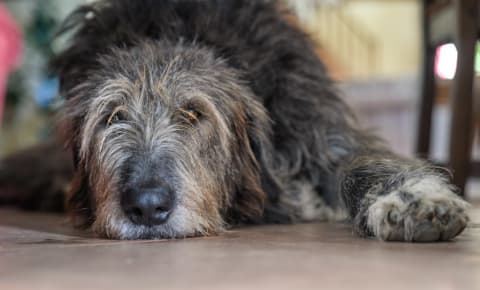Why is my vet recommending TPLO surgery for my dog?
TPLO or Tibial Plateau Leveling Osteotomy surgery is often recommended for dogs suffering from a torn cranial cruciate ligament (CCL).
What is the CCL?
The cranial cruciate ligament is the ligament that connects your dogs tibia (the bone below the knee) to their femur (the bone above their knee). In humans this ligament is known as the ACL or anterior cruciate ligament.
Unlike humans, because a dog's hind legs are always bent, the CCL is always a load bearing ligament. When the CCL is injured, your dog's knee becomes unstable and painful.
Symptoms of a CCL Injury
Symptoms of a CCL injury in dogs can appear suddenly but typically develop gradually. The most common signs of an CCL injury are:
- Stiffness (most noticeable after rest, following exercise).
- Difficulty rising and jumping.
- Hind leg lameness and limping.
Continued activity on a mildly injured CCL will cause the injury to worsen and symptoms to become more pronounced.
Approximately 60% of dogs with an CCL injury in one leg will go on to injure the other knee soon afterwards.
TPLO - Tibial Plateau Leveling Osteotomy Surgery
Rather than replacing the CCL with an artificial ligament through an Extracapsular Repair, TPLO surgery eliminates the need for the CCL ligament altogether by reconfiguring the knee.
TPLO surgery involves making a curved cut in the tibia from the front to the back, then rotating the tibial plateau (top section of the tibia) backward until the angle between the tibia and femur are appropriately level. A metal plate is then used to stabilize the two sections of tibia in the desired positions while the bone heals in its new configuration.
Recovery from TPLO Surgery
Healing from TPLO surgery is typically very quick, many dogs will be walking on the leg within 24 hours of surgery, and most will be bearing moderate amounts of weight on the leg within 2 weeks.
That said, it is extremely important to severely limit your dog's activity for a minimum of 4 months following TPLO surgery. Following your vet's instructions is essential in order to avoid further injury to the leg while your dog is recovering from the surgery.
Your dog should be able to return to full physical activity, including running and jumping, approximately 6 months after surgery.
Note: The advice provided in this post is intended for informational purposes and does not constitute medical advice regarding pets. For an accurate diagnosis of your pet's condition, please make an appointment with your vet.
To find out more about TPLO surgery to repair your dog's CCL or ACL injury, contact our Cordova vets today.
Looking for a vet in Cordova and greater Memphis area?
We're always accepting new patients, so contact our veterinary hospital today to book your pet's first appointment.
Related Articles View All
Cats & Colds: Can They Get Them & What To Do?
Many people don't know that our cats can get sick, but they can catch colds just like we can! A cat with a cold will display similar symptoms as humans do such as sneezing and a runny nose. Here, our Cordova vets talk about the causes of cat colds and when to seek veterinary care.
Do cats get depressed?
Cats are known for their independent yet playful characters. So, if your cat seems sad, you're bound to be concerned. Today, we discuss signs of depression in cats, potential causes of cat depression, and what can be done to help your feline friend banish the blues.
My cat sleeps constantly, should I be worried?
No doubt about it, cats love to sleep. But how much is too much? Today, you will discover reasons why cats sleep so much and learn when to be concerned about your cat's sleeping habits.
What To Do If Your Cat or Dog Having Difficulty Breathing
Does your cat or dog's panting mean that they're having breathing difficulties? Today, our Cordova vets look at breathing difficulties in dogs and cats, and how they are treated.

